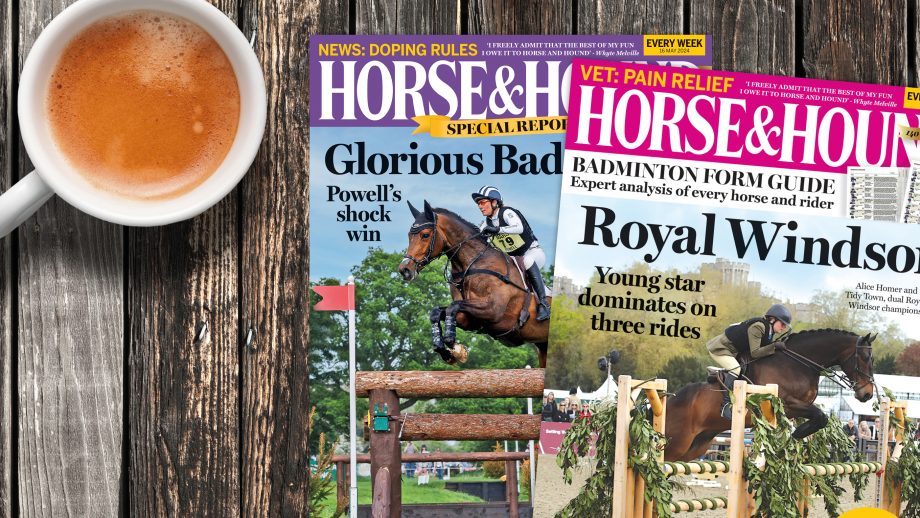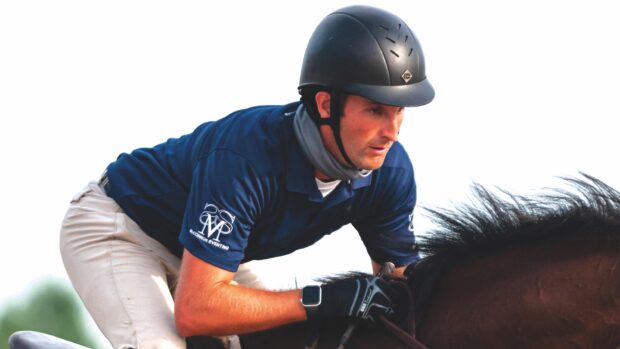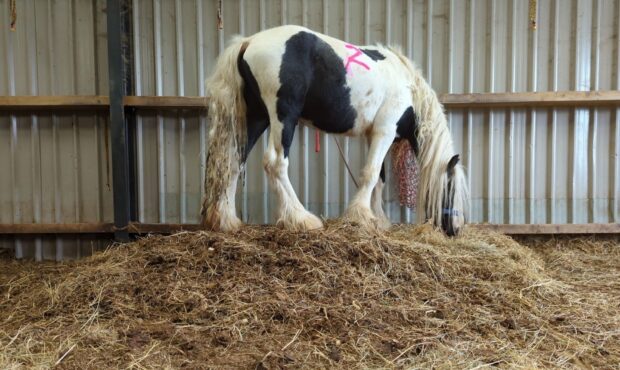The FEI has acknowledged the need to “explore a more balanced and comprehensive view of the sport”, after evidence was provided of “potential welfare issues hiding in plain sight”.
H&H reported on pictures sent to the FEI, of “blue tongues” and open mouths in horses competing in World Cup dressage.
On 9 April, the group who submitted them, leading veterinary researchers and a photographer, gave a presentation to the FEI and on the FEI’s invitation, made recommendations.
The presentation “includes high-definition visual evidence documenting signs of pressure-induced harm in elite dressage horses – such as blue tongues, compressed oral and facial tissues, restricted airways and behavioural indicators of distress”, the group said.
“We shared this material with the FEI because we believe the current body of scientific knowledge, spanning anatomy, physiology, physics, neuroscience, psychology and animal welfare science, is already sufficient to act. Further invasive research would only serve to replicate what is already evident.
“Our position is clear: we do not need to inflict more pain on horses in experimental settings to prove what we already know. What is required now is recognition and reform.”
Cristina Wilkins of the University of New England, who is studying for a PhD in the “one welfare” implications of horse-human interactions and has evented up to four-star (now five-star) level, explained that she has been reviewing welfare indicators. She said high-definition fast-frame photography captures more information per second than video, and that photographer Crispin Parelius-Johannessen is a “crucial member” of the team.
“We’ve been examining very closely thousands of photographs revealing facial details and identifying potential welfare indicators that, without this technology, seem to be hiding in plain sight,” she said.
“As we will show, having reviewed this evidence, we are concerned that the pressures applied exceed biological limits and that even in skilled hands, these items of equipment pose a significant welfare risk that must be recognised for what it is.”
She added: “We understand that this is not intentional, that nobody in the sport is intentionally harming horses or overlooking signs of pain. But given that it is going unnoticed, we felt a responsibility to share our evidence as soon as we had reviewed it.
“We did this in alignment with the FEI’s stated encouragement to speak up and report and to be horse guardians, and in the hope that our reports will be taken seriously and acted upon promptly.”
The overall picture
One response to “blue tongue” photographs is often that they are just “a moment in time”. But Mr Parelius-Johannessen, who is also a rider, said he took more than 8,000 pictures of each horse in its eight-minute test. He demonstrated how each picture followed the next, with time stamps and that “these images show relevant welfare indicators representative of the entire performance, not just ‘moments in time’”.
Kati Tormola, a vet whose thesis was on bit-related injuries in competition horses – and whose practice specialises in dentistry – pointed out “intense stares”, facial tension and hyperflexion, suggesting pain, and unexplained “worrying” swellings.
David Mellor, an emeritus professor in animal welfare science and bioethics, and architect of the “five domains” welfare model, said: “The evidence is explicit and unequivocal. The dressage horses in our data sets are clearly in pain. Open mouth, quivering lower lip, pain face. The visible compression and sometimes lesioning of the tongue, lips and gums and pressure on the bars.”
Professor, vet and leading researcher Paul McGreevy, from the University of Sydney, asked if “current judging criteria have actually grown to reward” signs of pain or discomfort in horses, adding that judges “must be able to begin to comment on qualities such as harmony. And this is only possible when the horses are able to express themselves”.
Mrs Wilkins said the group “believes there is real opportunity for positive change and potential to better safeguard elite sport horse welfare”.
The group’s recommendations include revising judging criteria to reward releases of contact or rein tension and recognising that “pressure-induced tissue compromise, hyperflexion and indicators of fear and pain are evidence of welfare compromise”. They would also like the FEI to adopt non-invasive tools such as high-definition photography to identify welfare issues and integrate these into judging and stewarding.
Welcoming the dialogue
An FEI spokesperson told H&H the FEI “welcomes the dialogue” with the group and that its findings are being reviewed by the FEI veterinary committee.
“Many of the areas identified are already being addressed through the FEI’s ongoing work, including initiatives under the FEI dressage strategy working group and the equine welfare strategy action plan,” she said. “These efforts span a wide range of topics, from judging, scoring and tack/equipment use to ethical training and in-depth veterinary research, such as the oral cavity study currently under way.
“One key takeaway from [this presentation] was the need to explore a more balanced and comprehensive view of the sport. The presentation opened the door to some thoughtful discussions around the broader context, and highlighted the value of including a wider range of perspectives to reflect the complexity and diversity of equestrian sport.
“While the debate has largely centred on specific aspects like bit use, it’s important to recognise the broader complexity of these issues. We are committed to a comprehensive, evidence-based approach that takes into account the full spectrum of factors influencing horse welfare in sport.
“Constructive collaboration with the scientific community remains vital to our progress, and we value the opportunity to continue engaging with researchers and experts to ensure that equestrian sport evolves with the welfare of the horse always as the top priority.”
The spokesperson added that there are those who break rules and that public perception has been affected by “serious but isolated cases of abuse and alleged cover-ups, which do not accurately reflect the true commitment of the vast majority of athletes, officials and members of the equestrian community to horse welfare and fair competition”.
“Not all voices in this conversation share the same vision for equestrian sport,” she said. “Some groups fundamentally oppose involvement of horses in competition and may amplify concerns in ways that do not always reflect the full picture. While the FEI, of course, remains open to discussion, our priority must be meaningful progress; directing our energy towards proactive solutions based on scientific research, rather than simply responding to criticism.”
- To stay up to date with all the breaking news from major shows throughout 2025, subscribe to the Horse & Hound website
You may also be interested in:

Concerns over horses’ ‘blue tongues’ and open mouths pictured at World Cup qualifier

Why we are seeing blue tongues in dressage arenas – and what needs to be done about it

Dressage groups debate welfare and public trust, raising more questions than answers

Subscribe to Horse & Hound magazine today – and enjoy unlimited website access all year round



